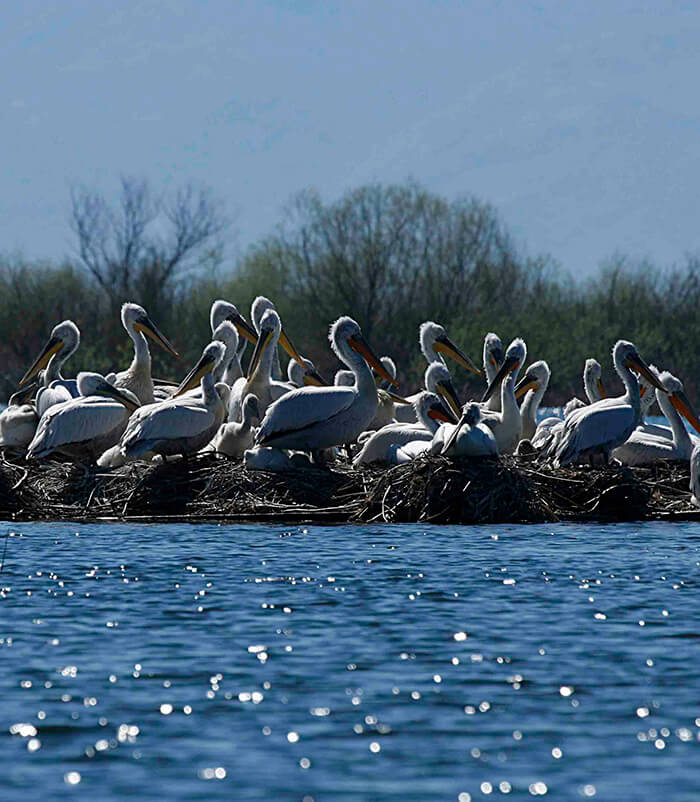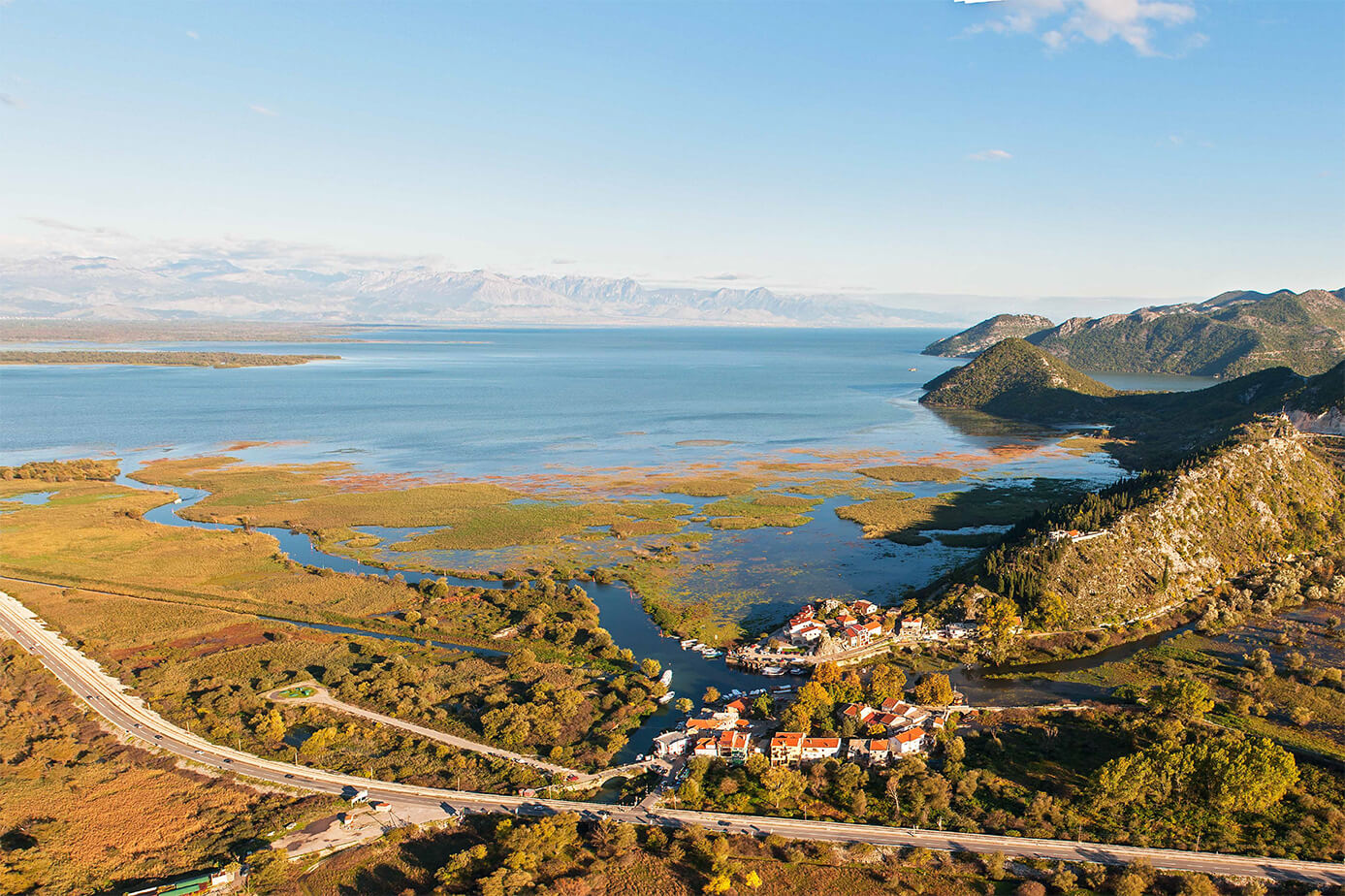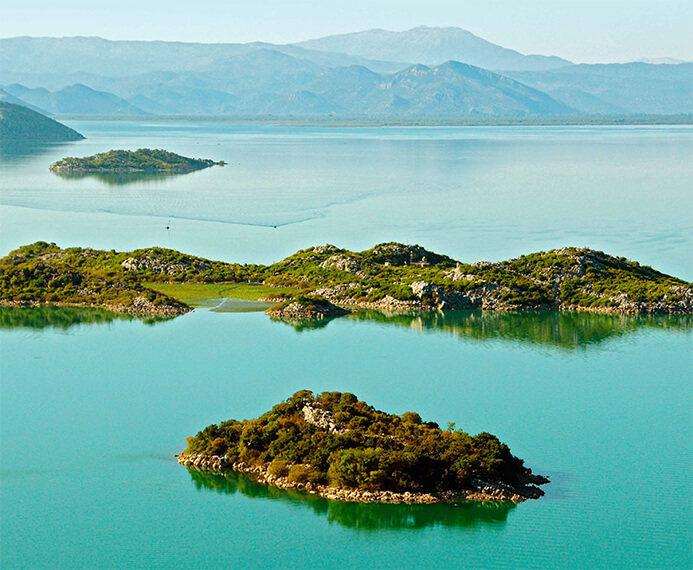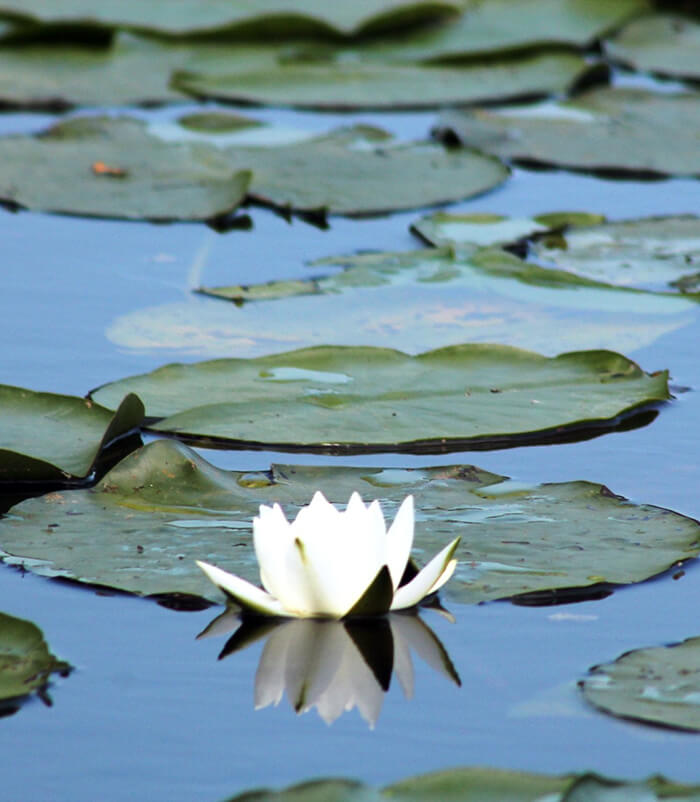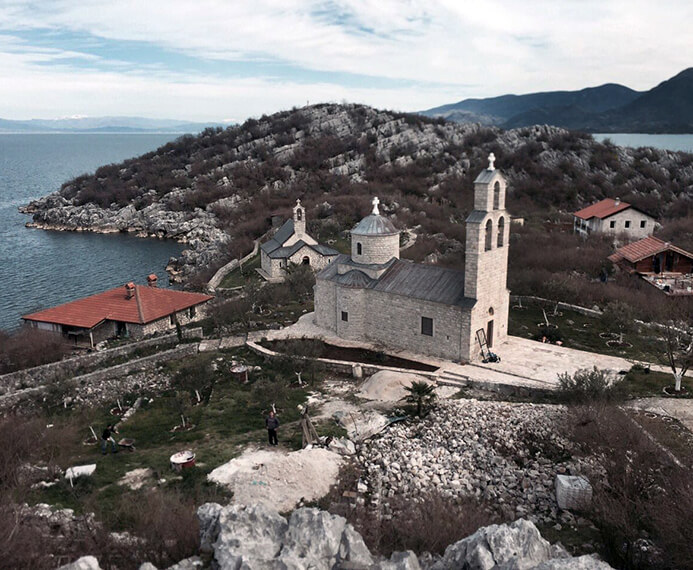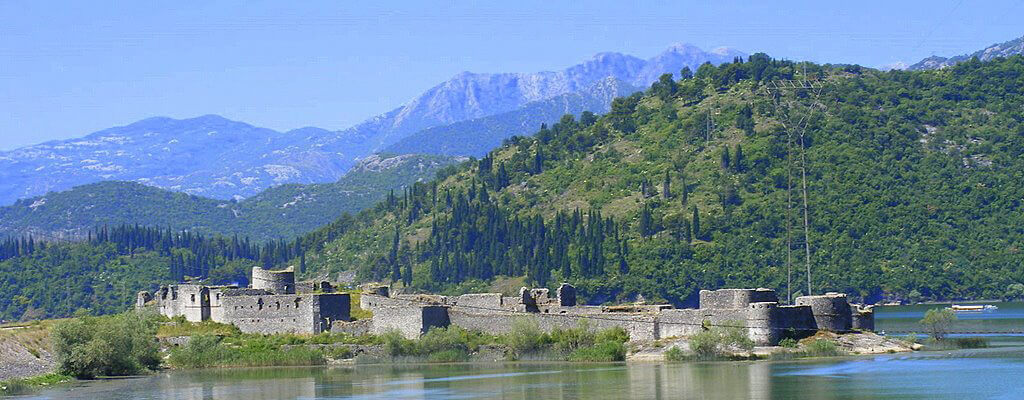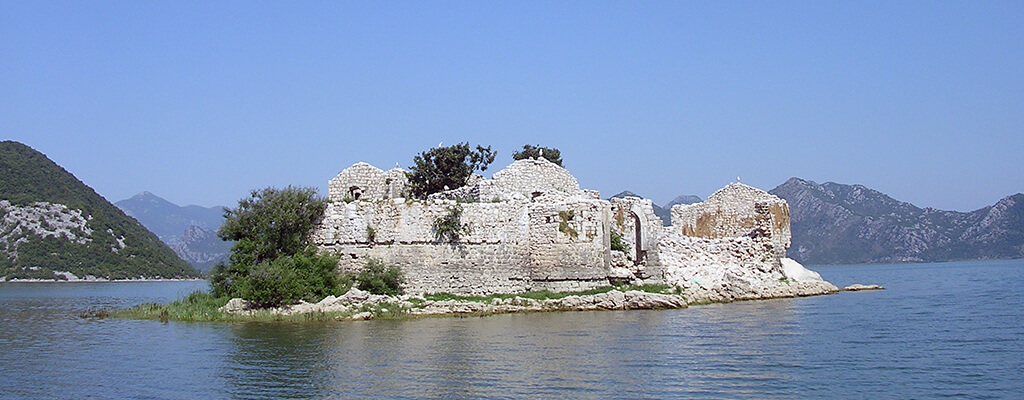National
park
Skadar
Lake
Skadar Lake is the greatest lake in the Balkans. Depending on the water level, it is from 345 to 505.8 square km. Territorially, the two thirds of the lake belongs to Montenegro, and one third belongs to the Republic Albania.
Average depth of the lake is 5m and maximal is 60m. Submediterranean climate prevails in the region of Skadar Lake, with mild rainy winters and long warm summers.
Skadar Lake is kryptodepression - some parts of its bottom are below the sea level. Most often they are underwater springs, which are found along the southwestern bank of the lake.
Montenegrin part of Skadar Lake was proclaimed to be National Park in 1983. As a significant international region for residence for birds, Skadar Lake aquires IBA status, and has been on the Ramsar list fom 1995 - The Ramsar Convention on Wetlands of international importance, especially as waterfowl habitat. Within the National Park there are two special natural reserves: Panceva Oka and Monastery Land.
The ecosystem of Skadar Lake is extremly complex, of the submediterranean type, with domination of freshwater and wetland biotope. Presence of scrappy bushes, garigues and rocky grounds on south carst slopes points to the diversity and abundance in flora and vegetation.
Floating wetland species, white water lillies and yellow lilies and water chestnut spread over the great part of the water surface during summer months, giving the lake a recognizable appearance. On land, along the northern side, in a few localities there are trees of endemic Skadar oak, which is protected as endangered species.
Thanks to primarily preserved ecosystems and the unapproachable parts of the lake, especially along the northern, marshy part of the lake, Skadar lake is "paradise for birds" for 280 birds species, out of which greatest number are rare and endangered species. The best known are: Dalmatian pelican, grey, white and yellow heron, grebes, wild ducks, moorhens etc.
Dalmatian pelican is the biggest swimming bird living and nestling on Skadar lake. This bird is globally endangered and represents the attraction and brand of the National park Skadar Lake.
The littoral of the lake is characterized with old fishermen settlements, with preserved original architecture, situated next to the fishing regions. They were adapted to fishing way of life with ground stone huts, connected with paved pathways and stone stairways. Small wooden boats of recognizable appearance and shape are typical vessels suited to the conditions and experience of many centuries in sailing on Skadar Lake. In the past they were basic vessels of the local residents, and today they are undoubtedly one of the most impressive attractions of Skadar lake.

